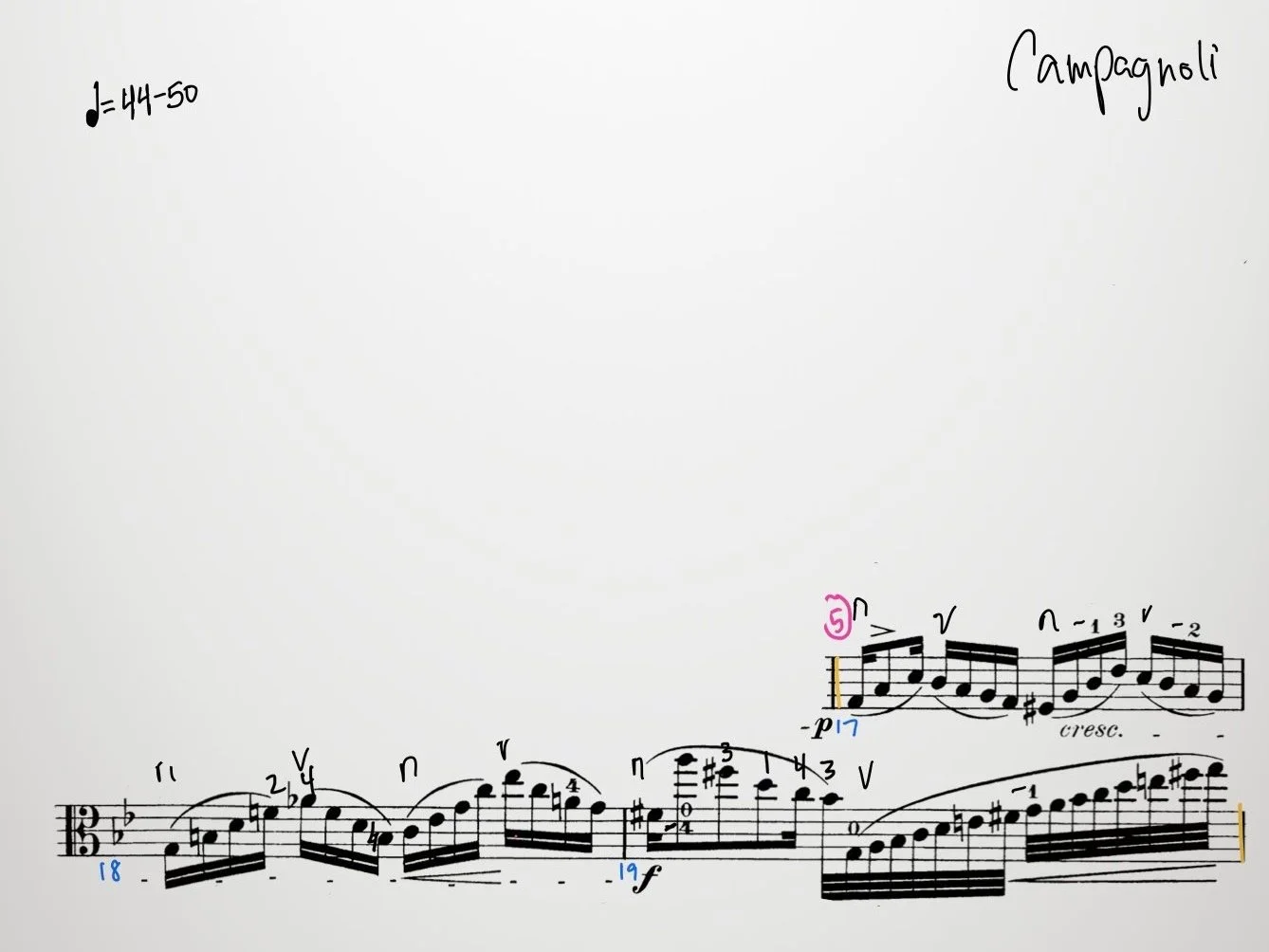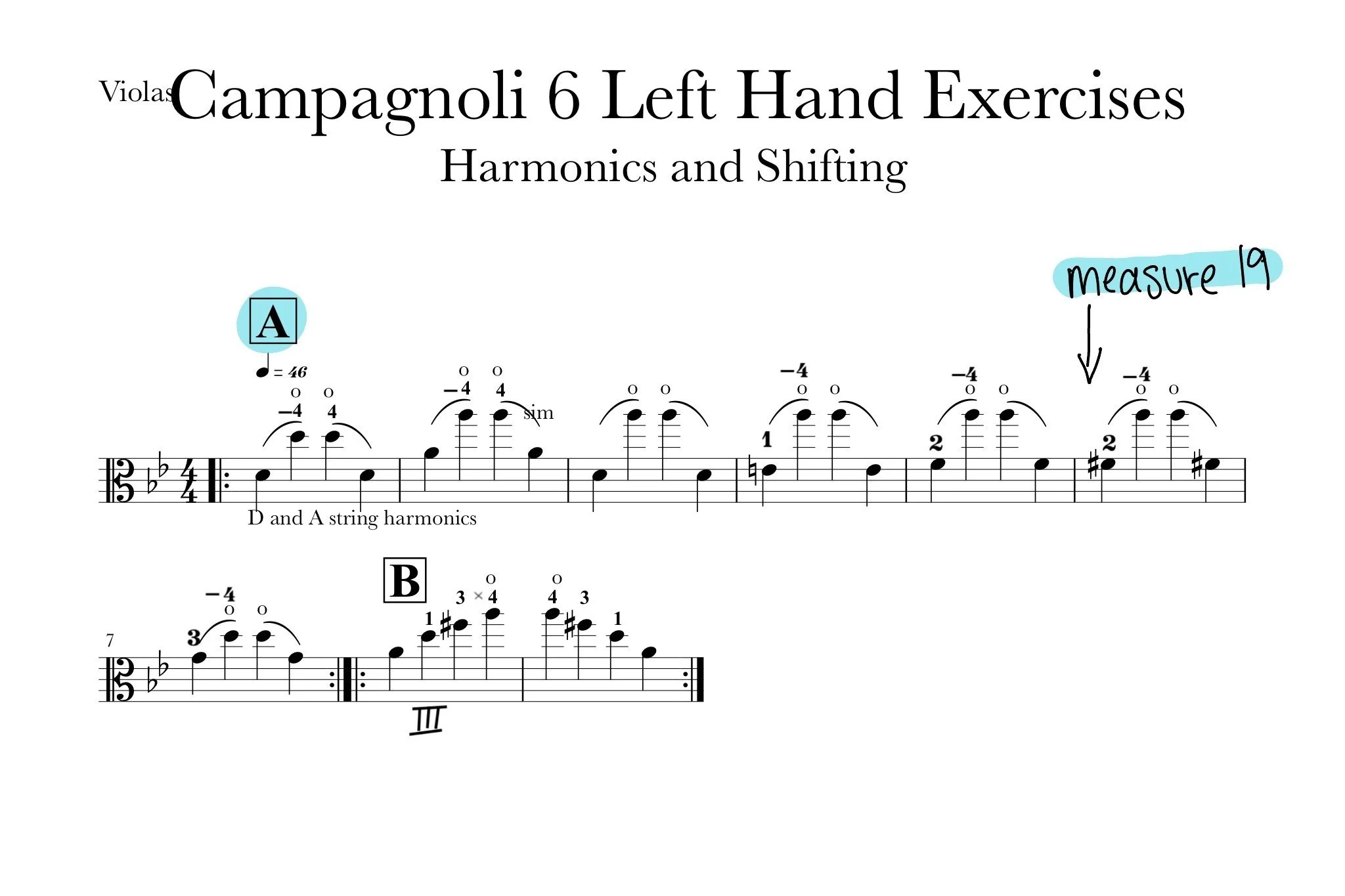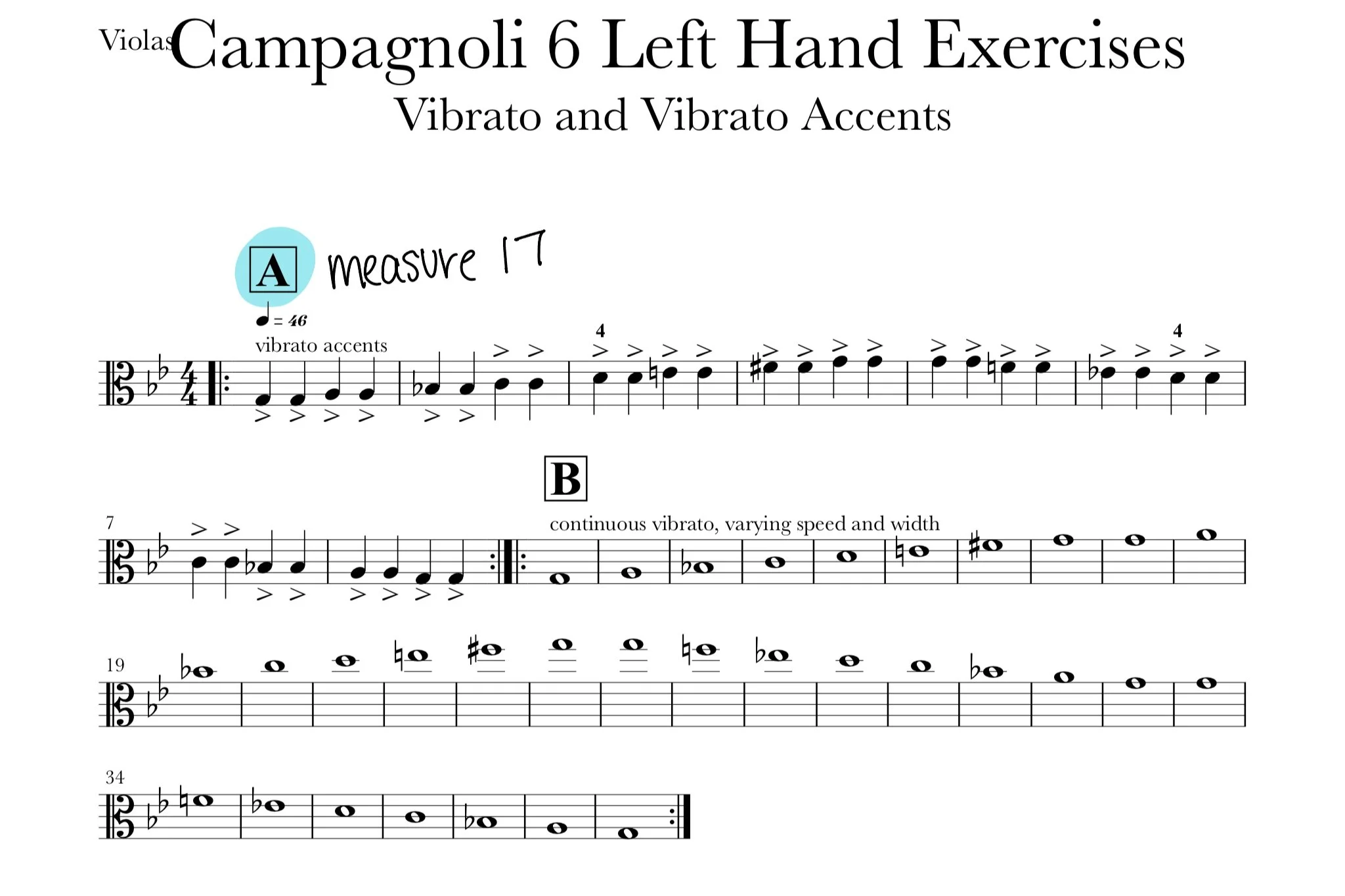IN THIS LESSON
PHRASE 5 -
MEASURE 17-19
Phrase 5 remains in G minor, intensifying from the quiet tension of Phrase 4 to the dramatic peak of the etude in Phrase 6. The continued use of accidentals heightens harmonic tension while anchoring us in G minor. Aim to apply vibrato to 16th notes in this phrase to enrich the melodic line.
As you build energy from the piano in Measure 17 to the forte of Measure 19, and then through the crescendo at the end of Measure 19, maintain steady pacing of both dynamics and rhythm. The expression should be dramatic and larger than life, yet controlled and focused, avoiding any loss of control.
Phase 1 of Practice:
Start your work at a slower tempo.
Practice with bow subdivisions in 16th notes in measures 17-18, and 32nd notes in 19. Work on the use of bow speed, weight, and contact point to maximize dynamic range during this phase of learning.
Because of the longer slurs in measure 19, we will eventually be restricted in bow speed - search for maximizing bow contact and weight balance to find the fullest sound in this measure.
Begin without the printed slurs, playing separate bows while learning the pitches with the left hand.
Phase 2 of Practice:
Play the printed rhythm instead of subdividing with the bow.
Incorporate the printed bowings into your practice.
General Practice Strategies:
Prioritize demonstrating the huge dynamic and emotional range of this phrase.
Remember, harmonic tension does not mean physical tension! Ensure relaxation in your bow arm and fingers despite the harmonic tension in the music.
This will actually increase your ability to play both very quietly and very full sounds.
Maintain vibrato throughout to enhance physical relaxation and to convey a sustained melodic line.
Place fingers with slightly more energy or “plop” on the strings, to produce a more energetically and rhythmically charged sound.
Given the energetic nature of this phrase, consider using an active vibrato — somewhat faster and narrower.
To master the rhythm, practice subdividing bow strokes, such as using a 16th- or 32nd-note subdivision.
Breaking Down the Phrase & Reference Guide to Previous Exercises:
Measure 17:
Play the accent in beat 1 with a slight scoop of bow weight and a burst of vibrato speed (Reference: Vibrato Accents exercise).
Optional: Use 4th finger for the F# in beat 3.
Shift to 3rd position on 1st finger for the C in beat 3, and remember the Eb.
Shift back to 1st position on 2nd finger for Bb.
Begin the crescendo in the middle of the bar, aiming to reach mezzo-piano by the end of the measure.
Measure 18:
Ensure the B natural carries through beat 2.
The crescendo should feel exponential in this measure. The rise in register will help, but we must pace bow speed and weight to maximize the impact.
Measure 19:
Shift from 1st position F# on D string to the A string harmonic with 4th finger for the first two notes (Reference: Harmonics and Shifting exercise A, Measure 6).
The following notes are in 3rd position — remember to play Bb (Reference: Harmonics and Shifting exercise B).
Optional: Create space for the crescendo in the 32nd note scale by backing off slightly, aiming for mezzoforte (mf) on beat 3 immediately before the low G. Regardless, ensure a clear crescendo to a very full forte+ on beat 4.
Note that the 32nd note scale is a G minor scale.


